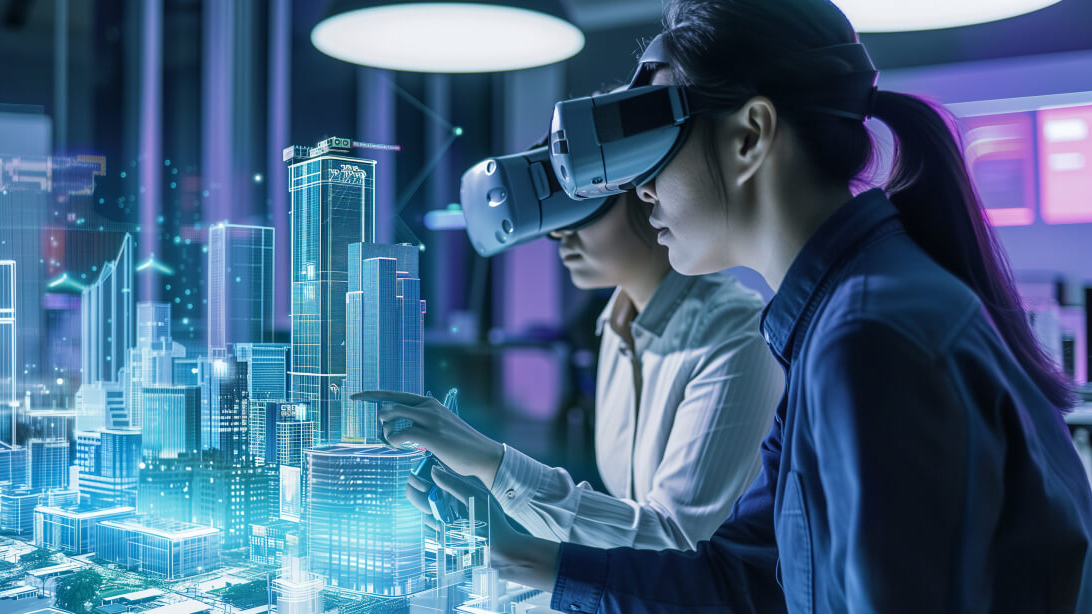As technology continues to advance at a breakneck pace, the concept of the “metaverse” has emerged as one of the most intriguing and transformative trends of the 21st century. Combining elements of virtual reality (VR), augmented reality (AR), and blockchain technology, the metaverse represents a new frontier in digital interaction and experience. This article explores the metaverse’s evolution, its current applications, and its potential impact on various aspects of society and technology.
1. What is the Metaverse?
The term “metaverse” was popularized by Neal Stephenson in his 1992 science fiction novel Snow Crash, where it described a virtual reality-based successor to the internet. Today, the metaverse refers to a collective virtual shared space, created by the convergence of virtually enhanced physical reality and physically persistent virtual reality. It encompasses a wide range of digital environments where users can interact with each other and digital objects in real-time.
The metaverse is built on three key technologies:
- Virtual Reality (VR): VR immerses users in a completely digital environment, creating an experience that feels physically real. VR headsets and accessories enable users to explore and interact with these virtual worlds.
- Augmented Reality (AR): AR overlays digital information onto the real world, enhancing the user’s perception of their environment. AR applications can be accessed through smartphones, tablets, or AR glasses.
- Blockchain Technology: Blockchain provides the infrastructure for digital ownership and transactions within the metaverse. Cryptocurrencies and non-fungible tokens (NFTs) are used to buy, sell, and trade virtual assets.
2. The Evolution of the Metaverse
The concept of the metaverse has evolved significantly over the past few decades. Early examples of virtual worlds, such as Second Life and World of Warcraft, laid the groundwork for the metaverse by offering immersive online experiences. However, the modern metaverse is characterized by its integration of advanced technologies and its ambition to create a fully interconnected digital universe.
Key milestones in the development of the metaverse include:
- Advancements in VR and AR: Technological improvements in VR and AR hardware and software have made immersive experiences more accessible and realistic. Companies like Oculus (now Meta) and Microsoft have been at the forefront of these advancements.
- The Rise of NFTs: Non-fungible tokens have revolutionized digital ownership by allowing users to buy, sell, and trade unique virtual assets. NFTs have become a cornerstone of the metaverse economy, enabling the creation and exchange of digital art, collectibles, and virtual real estate.
- Corporate Investments: Major tech companies, including Meta (formerly Facebook), Microsoft, and Google, have invested heavily in metaverse development. These investments have accelerated the creation of metaverse platforms and applications.
3. Current Applications of the Metaverse
The metaverse is already making an impact across various domains:
- Entertainment and Gaming: Virtual worlds and gaming environments are among the most popular applications of the metaverse. Games like Fortnite and Roblox offer expansive digital spaces where users can socialize, play, and create content. Live events, concerts, and social gatherings are increasingly being hosted in these virtual environments.
- Social Interaction: The metaverse enables new forms of social interaction and community building. Platforms like VRChat and AltspaceVR allow users to meet, chat, and collaborate in virtual spaces, fostering connections that transcend geographical boundaries.
- Virtual Workspaces: Remote work and virtual collaboration have been significantly enhanced by metaverse technologies. Companies are exploring virtual office spaces and meetings where employees can interact in a more immersive and interactive environment than traditional video conferencing tools allow.
- Education and Training: The metaverse offers innovative solutions for education and training. Virtual classrooms, simulations, and interactive learning environments provide immersive educational experiences that can enhance engagement and retention.
4. Challenges and Considerations
While the metaverse presents exciting opportunities, it also poses several challenges and considerations:
- Privacy and Security: The metaverse raises concerns about data privacy and security. As users interact and share information within virtual environments, safeguarding personal data and preventing unauthorized access becomes crucial.
- Digital Divide: Access to the metaverse requires advanced hardware and high-speed internet, which may exacerbate the digital divide between those who have access to these resources and those who do not. Ensuring equitable access is essential for the metaverse’s inclusive growth.
- Regulation and Governance: The metaverse operates across multiple jurisdictions and involves various stakeholders, raising questions about regulation and governance. Establishing standards and frameworks to manage virtual interactions and transactions is a key challenge.
- Ethical Considerations: The metaverse introduces ethical considerations related to virtual identity, behavior, and content. Addressing issues such as virtual harassment and digital rights is important for creating a positive and respectful virtual environment.
5. The Future of the Metaverse
Looking ahead, the metaverse is expected to continue evolving and expanding:
- Interoperability: Efforts are underway to create interoperable metaverse platforms that allow users to seamlessly transition between different virtual environments and experiences. This would enhance the overall connectivity and cohesion of the metaverse.
- Enhanced Immersion: Future developments in VR and AR technology will likely lead to even more immersive and realistic experiences. Advances in haptic feedback, spatial audio, and brain-computer interfaces could revolutionize how users interact with the metaverse.
- Economic Opportunities: The metaverse is set to become a major economic driver, with new business models and revenue streams emerging. Virtual real estate, digital assets, and virtual services will create opportunities for entrepreneurs and investors.
- Cultural Impact: As the metaverse becomes more integrated into daily life, it will influence culture and society in profound ways. The ways we work, play, and connect will continue to be reshaped by the possibilities offered by virtual worlds.
Conclusion
The metaverse represents a transformative shift in how we experience and interact with digital environments. As technology continues to advance and the metaverse evolves, it has the potential to revolutionize various aspects of society and technology. Staying informed about these developments and understanding the implications of the metaverse will be crucial for individuals, businesses, and policymakers as we navigate this exciting new frontier.

